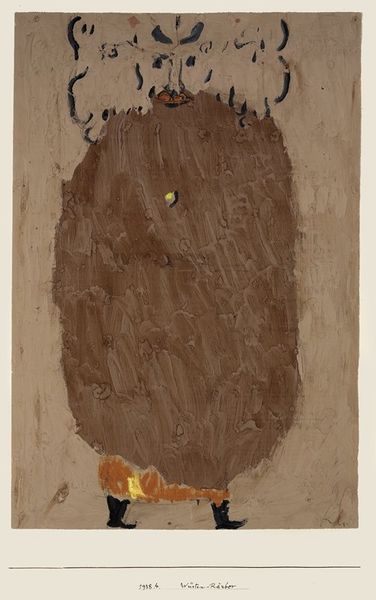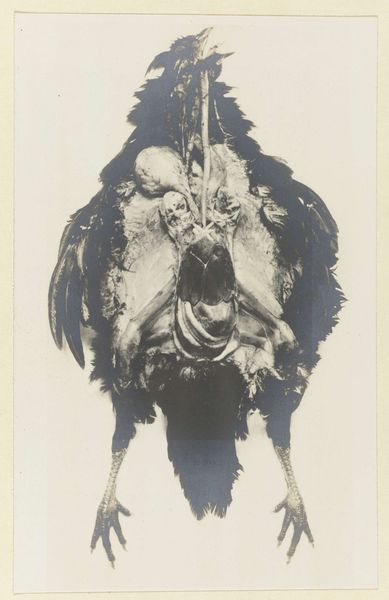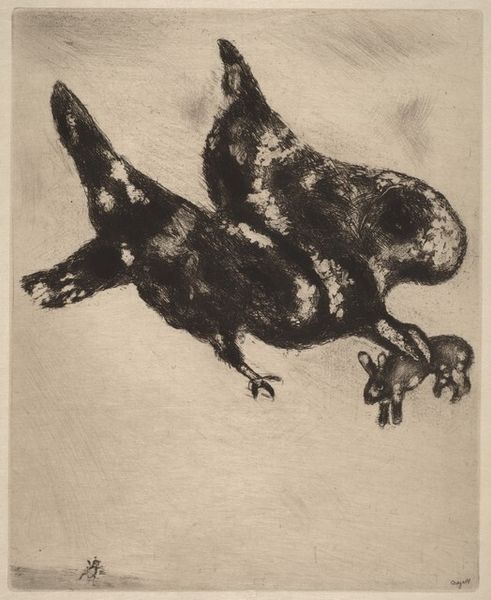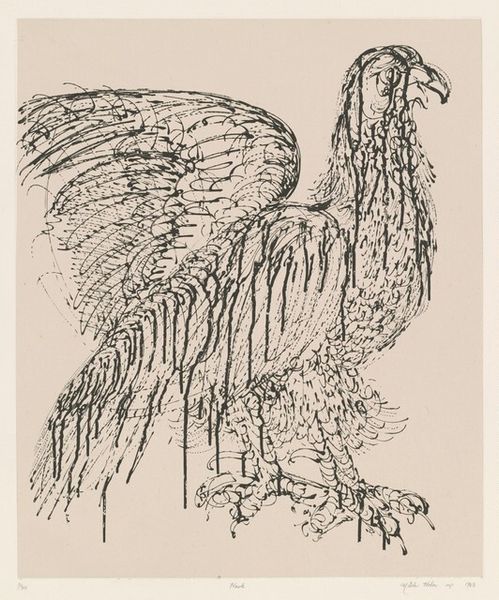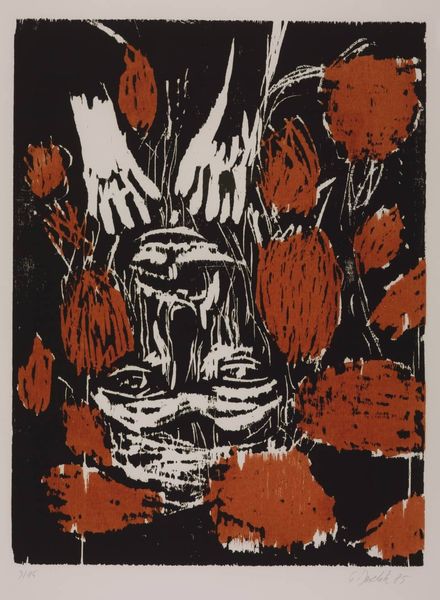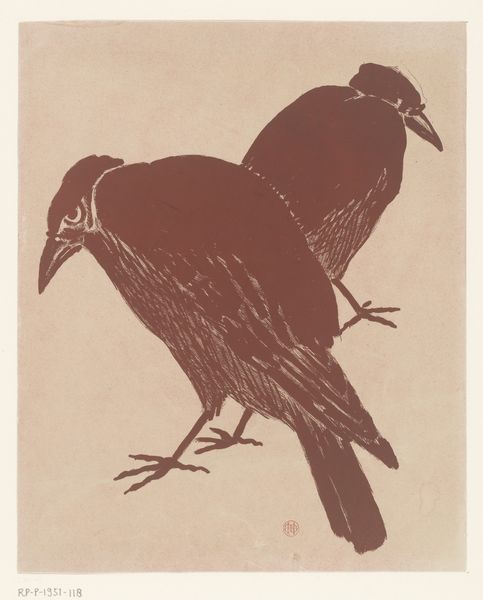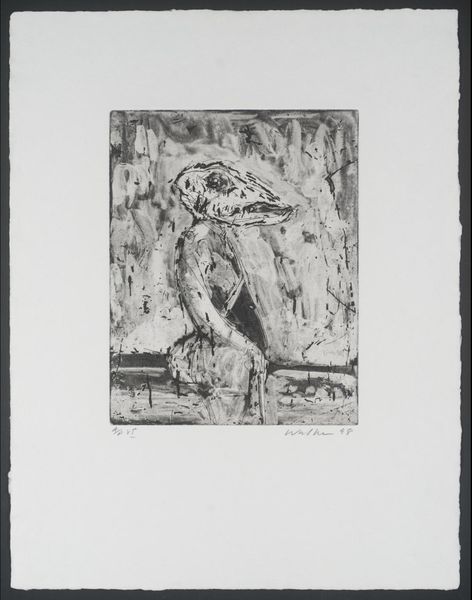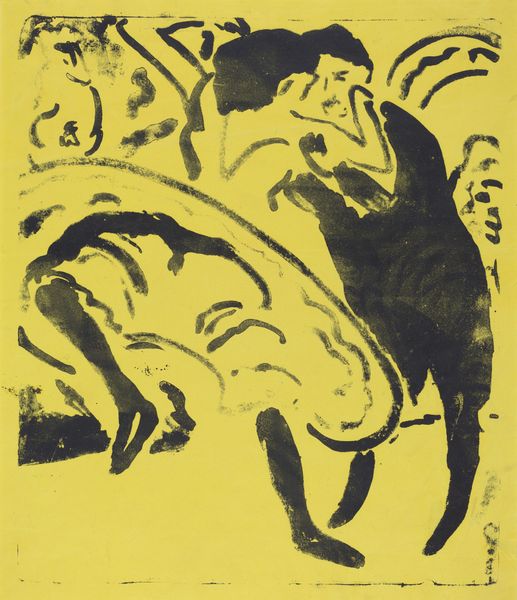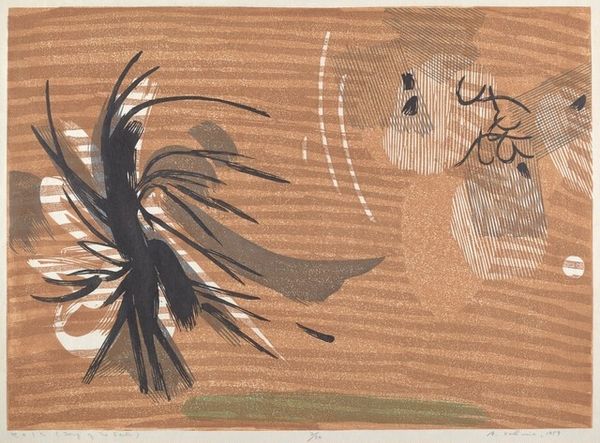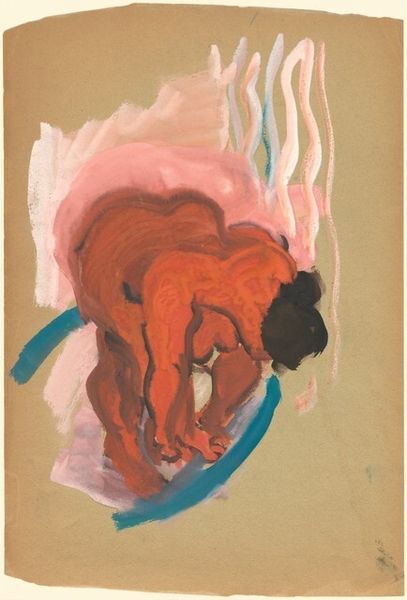
#
portrait
# print
#
modernism
Dimensions: sheet: 65.7 x 49.5 cm (25 7/8 x 19 1/2 in.)
Copyright: National Gallery of Art: CC0 1.0
Curator: Welcome. Here we have Graham Sutherland’s 1968 print, "Owl (rose ground)." What strikes you about it? Editor: That colour palette is surprising, somehow unsettling. A faded rose background against this almost gothic rendering of the owl itself, perched precariously… What printmaking method did Sutherland employ? Curator: It’s a lithograph. Look closely at the layers and the visible texture left by the stone, revealing Sutherland's embrace of the process itself. For me, owls carry potent symbolism, wisdom certainly, but also shadow, the unseen. What kind of cultural resonance might that hold? Editor: Given the mid-20th century context, it suggests perhaps anxieties around surveillance, particularly during times of conflict… the ever-watchful eye of power? Was Sutherland intentionally making a statement, do you think, about postwar society? Curator: He experienced World War II firsthand as a war artist, which changed him. The war’s impact filtered into these more unnerving and symbolic forms, like the owl. Considering how the owl has appeared across cultures—Athena’s companion in ancient Greece, a harbinger of ill-omen in some folklore—the associations are wide-ranging. And look at how he distorts the owl's features, creating something almost grotesque… a deconstruction, if you will, of this traditional symbol. Editor: Absolutely, I also find it compelling how Sutherland challenges artistic hierarchies by bringing typically "craft-based" processes into the fine arts arena. The lithographic stone itself becomes part of the artistic statement. Also, I see him grappling with both material limitations and boundless creativity. It reflects mid-century experiments with industrial production combined with this very primal symbolism. Curator: Indeed. And I wonder how the proliferation of printmaking in the 60s enabled this message to be circulated, perhaps challenging established notions of artistry, or who gets to possess art. It democratizes this idea, or message. Editor: So this isn’t just an aesthetic image of an owl; the materials and the means of production were essential for Sutherland's art. We could say that these processes amplify his themes, both aesthetic and ideological. Fascinating. Curator: It's certainly an image that makes us reconsider familiar symbols through the lens of material production and broader cultural contexts. Editor: It leaves us wondering: what symbols are we perpetuating in contemporary art today?
Comments
No comments
Be the first to comment and join the conversation on the ultimate creative platform.


